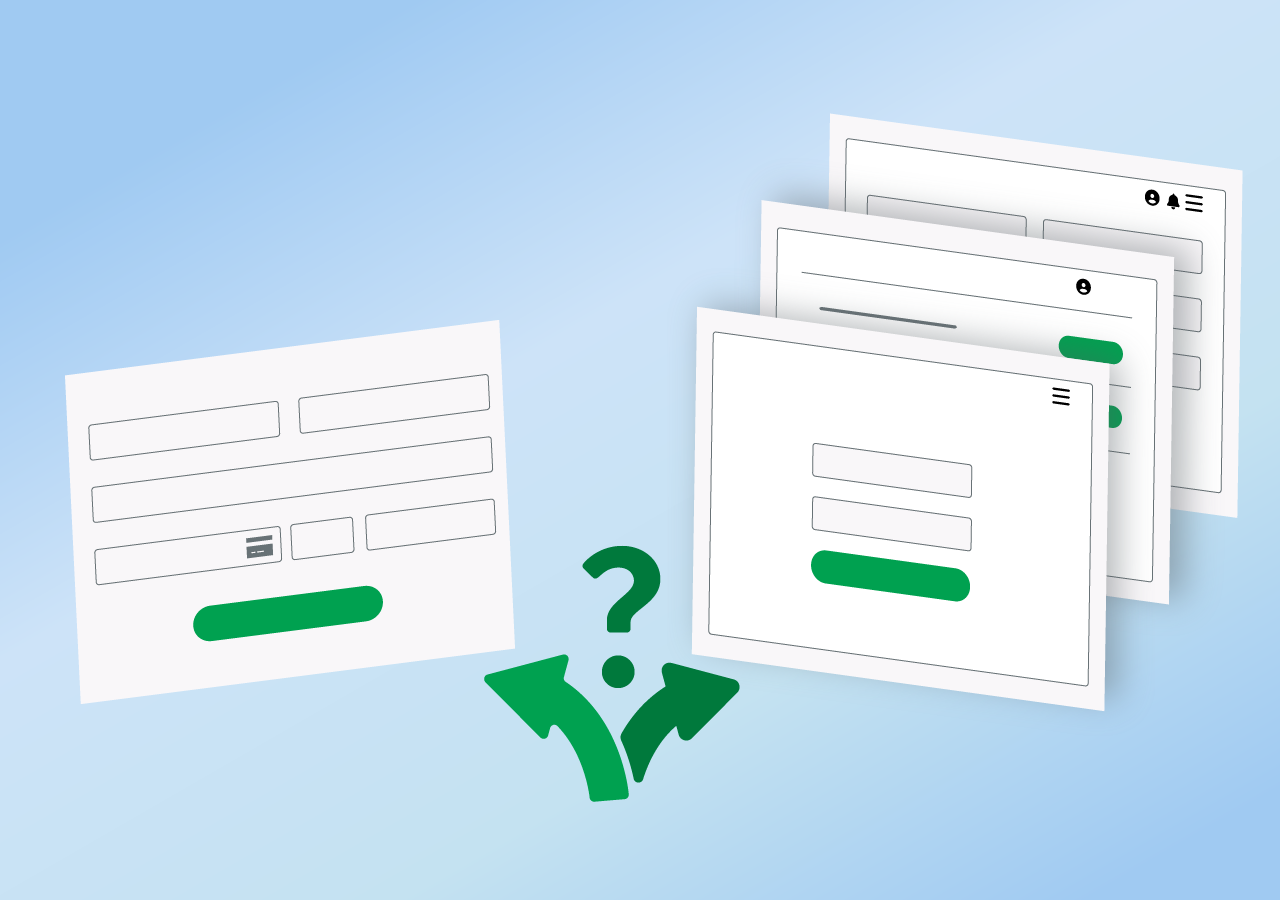When it comes to payment portals, collection firms generally have two options: a portal requiring a username and password or a simple payment form that doesn’t require login credentials. While both options allow consumers to make payments, they serve distinct purposes and offer different benefits. Because of the features and flexibility, a payment portal is often the better choice for collection firms.
Payment Form: Simplicity at a Cost
A payment form is a no-login solution designed for quick and straightforward transactions. Consumers can make payments without creating an account or remembering login credentials. This option offers a few key advantages:
- Ease of Use: Payment forms make it easy to make a one-time payment since there’s no account setup or login required.
- Low Barrier to Entry: Consumers may be more likely to complete payments when the process is straightforward.
- Minimal Technical Setup: A payment form is relatively easy to implement since it doesn’t require authentication systems or user account management.
However, there are some significant drawbacks that make the payment form a less attractive option:
- No Account Details: Consumers can’t access critical information like outstanding balances, payment history, or file details. This can lead to confusion and errors.
- Limited Engagement: When consumers can’t track or manage their accounts, they may be less likely to fully resolve their debts.
- Higher Risk of Payment Errors: Without access to account details, consumers might underpay, overpay, or fail to provide necessary file information.
The Payment Portal: A Comprehensive Solution
A login-required payment portal offers a more robust experience by allowing consumers to access their account details after authenticating their identity. While this solution involves more complexity, it provides several benefits that outweigh the initial setup effort:
- Enhanced Transparency: Consumers can view essential account information, including balances, payment history, and other file details. This helps in making informed decisions about their payments.
- Self-Service Features: With a secure login, consumers can manage their accounts, set up payment plans, or review previous transactions without customer service assistance.
- Stronger Data Security: Login credentials ensure that sensitive financial and personal information remains protected, increasing consumer trust in the platform.
- Future Engagement: By registering for an account, consumers can receive personalized notifications, updates, and reminders, which encourage continued engagement with the platform.
When is a Payment Form a Good Idea
A payment form can be a sufficient solution for collection firms in various use cases where simplicity, speed, and minimal barriers to payment are priorities. Here are some common scenarios:
One-Time Settlement
Consumers don’t need ongoing account access or payment tracking. A quick and frictionless payment process helps reduce the likelihood of abandonment.
Phone Negotiated Settlements
A collection agent negotiates a payment amount over the phone or via email, and the consumer just needs a simple way to complete the payment. With a payment form, consumers can quickly pay the agreed-upon amount without needing to register for or log in to a portal.
Small Balance Portfolio
Your account portfolio primary contains small balances that can be paid in full at once. A no-login form makes it easier for the consumer to pay without overcomplicating the process.
Payments From Third-Parties
When a friend, family member, or another third-party (like a cosigner) is paying on behalf of the consumer, there’s no need for account access, so a payment form makes sense.
Why a Payment Portal is the Better Choice
A payment portal is a better solution for collection firms in scenarios where consumers need access to detailed account information, recurring payment options, or more robust features for managing their accounts. Here are some common situations where a payment portal is the optimal choice:
Offering Payment Plans and Installments
Consumers are enrolled in a payment plan or need to set up and manage installment payments. The portal allows consumers to view their remaining balance, payment history, and upcoming payment schedule. It also enables them to update payment methods or make adjustments to their plan as needed.
Ongoing Account Maintenance
For consumers with larger balances, portals provide a centralized view of account details, including transaction history, fees, and settlements, giving consumers a comprehensive picture of their debt.
Multiple Debts or Accounts
When a consumer owes money on multiple accounts, a portal can organize all debts under one login, making it easier for consumers to track and manage multiple accounts in one place, reducing confusion.
Proactive Notifications and Communications
Portals can integrate with automated communication tools to send notifications, while also allowing consumers to view messages or documents securely within the portal. This is idea when consumers need reminders about upcoming payments, settlement offers, or important account updates.
Meet Client Needs
If creditors require detailed reporting or account tracking for compliance or reconciliation purposes, a portal can be used to generate detailed reports and logs of payment activity. This ensures transparency and accountability for all stakeholders.
Conclusion
While a payment form offers simplicity and speed, it can’t match the transparency, security, and long-term engagement provided by a login-required portal. For collection firms looking to enhance consumer trust, improve payment accuracy, and streamline their operations, investing in a secure payment portal is a strategic decision that generates more revenue and value over time.


